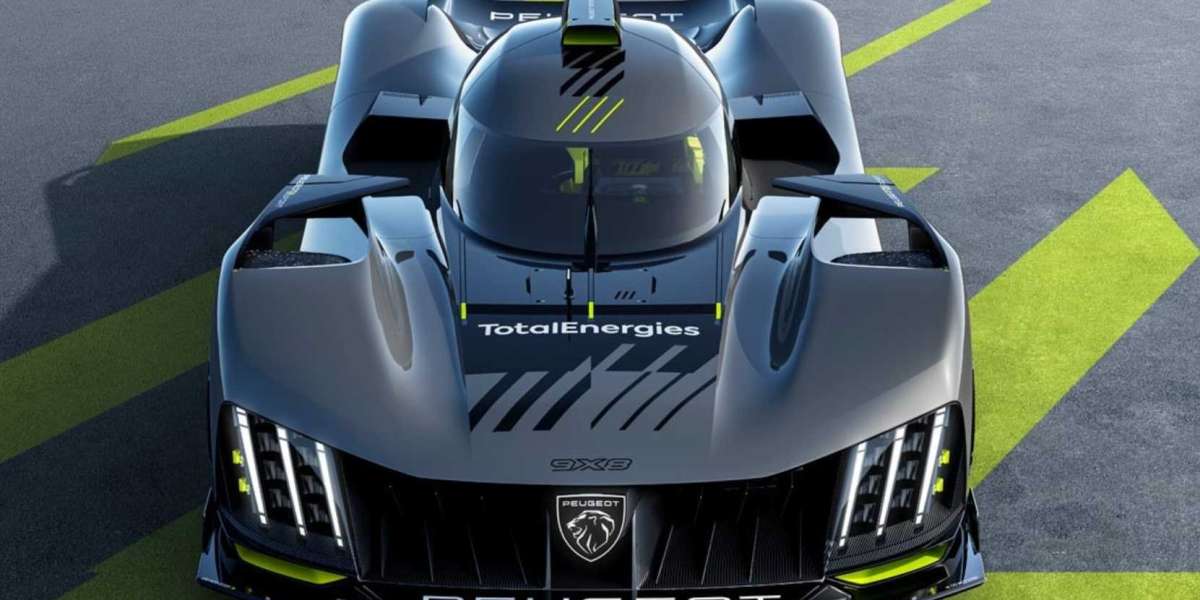Before the Peugeot 9X8 HYBRID hypercar went to the track for pre-homologation tests, it was initially a 51.1 GB digital project consisting of 15,267 files on a hard drive. However, digital progress has opened up entirely new possibilities in motorsport. This allowed the Peugeot Sport engineers to visualize and validate a genuinely groundbreaking concept for the Peugeot 9X8 Hybrid hypercar – which, unlike all its competitors, has no rear wing – before even a single component was made.
The sophistication of modern digital software makes it possible to conduct in-depth technical studies while saving significant amounts of time, money, and resources. For example, the Peugeot 9X8 hypercar existed virtually for a while before finally spinning its first wheel on the race track. The Peugeot Sport teams spent two years modeling and simulating the car, using existing software adapted to the project's specific needs and computer programs developed from scratch. One of our strengths is creating the tools ourselves to design the components we need," explains François Coudrain, Powertrain Director of Peugeot Sport's FIA World Endurance Championship (WEC) program.

Several dozen people were involved in the Peugeot 9X8 digital project. Everyone has the same goal: to develop the ultimate long-distance racing car, from computer scientists to race engineers. As a result, the development department always follows the same pattern to get the best possible outcome:
- A careful reading of the regulations to know exactly what is allowed and what is not, and above all, to imagine what could be possible.
- Development of the concept: formalization of the performance goals and requirements depending on the regulations. This work is then further detailed in a series of interrelated specification documents.
- Formulation of design hypotheses: Based on the overriding requirements, the engineers responsible for developing the vehicle present various concepts. This is where the ingenuity of Peugeot's engineering and design teams, who have been involved in the 9X8 Hypercar project from the start, comes into its own. Although technological advancements provide numerous opportunities, they cannot wholly replace human creativity. The Peugeot 9X8 HYBRID Hypercar project is, first and foremost, a human achievement. The most promising digital concepts are saved, and their relative merits are then evaluated to decide on one finally.
- Using CFD simulations (Computational Fluid Dynamics): CFD simulation, which is mainly used in aerodynamics, is a reference for the flow of liquids, taking into account physical or chemical effects like turbulence and thermal excitation.
François Coudrain explains: "Thanks to all our software, we can take into account a multitude of dimensions, shapes, and materials and calculate the vehicle's weight following the technical regulations." As with the choice of the basic concept, the purely digital testing of systems and components enables us to evaluate many possible solutions that would not be feasible in reality. For a long time before we hit the track, our Peugeot 9X8 Hypercar was a project stored on a hard drive. Each of the 15,267 files represented one of its parts. The digital technology and the quality of our simulation tools allowed us to estimate the interaction between the different components and systems, so we already knew the theoretical performance and behavior of the car before testing it in reality. The physical validation phase of the project didn't start until much later when we finally got the car out on the track. "
Jean-Marc Finot, Director of Stellantis Motorsport, adds: "Artificial intelligence is an invaluable tool for analyzing the enormous amount of data generated by a racing car. Our "Big Data" processing applications allow us to simulate many different hypotheses that help us identify if we need to change the design of parts to achieve our target values. We start manufacturing the physical parts only when we define the characteristics and simulate the performance in various environments with a fully digital car. "
Some data was collected without doing any unique research into the nature of the material, the shape, or the number of parts. For example, the body is always made of carbon, the engine is made of aluminum, and there are always four wheels. But digital tools are used to figure out the size of essential parts and to simulate how they will behave.
For example, the Peugeot 9X8 has a triple electrical system (900-volt battery, 48-volt and 12-volt components). Thanks to digital technology, Peugeot Sport engineers could fully understand the vehicle's electromagnetic environment and determine the optimal dimensions for the wiring harnesses. To minimize the risk of interference, a tight connection between the physical components and the software had to be established. This was a demanding task that could only be accomplished with the help of digital technology. The team found that it is better to use smaller harnesses at 48V than at 12V, saving space and weight and improving compatibility between the physical tackles and the computers.
Other parts, off-the-shelf from Stellantis Sport or derived from off-the-shelf technical products, sometimes work very well without being modified in any way—an inventive approach that saves costs. Specific 48V engines in the Peugeot 9X8, for example, come directly from drones. They were tested and proven to work in the car using special software, but they didn't need any structural changes.
Digital simulations also allow adjustments, such as using materials around the exhaust pipes. Here the heat is very high, and the simulations revealed that the carbon bodywork needs to be protected or even replaced with aluminum or titanium. This was already a focus during the design planning phase, and it was confirmed during the simulation and the first real-world test phases.
The hard disk containing all the technical data of the Peugeot 9X8 served as the basis for creating the first 1:1 scale model for the wind tunnel and then for developing a real racing car, which will be further developed on the track. @via Car Division.







